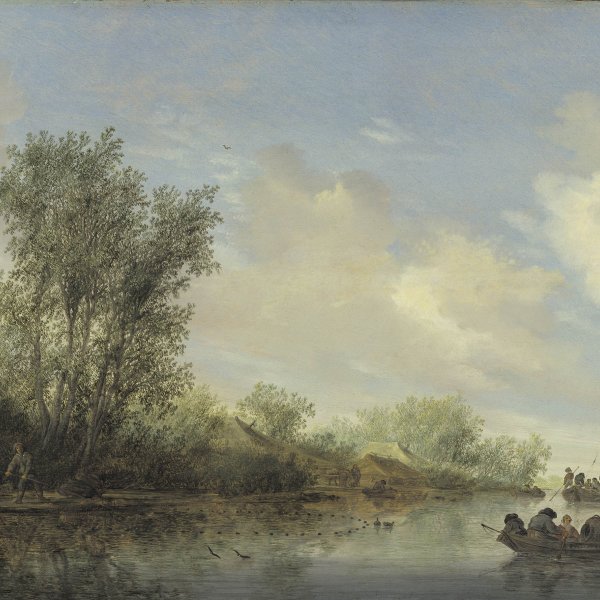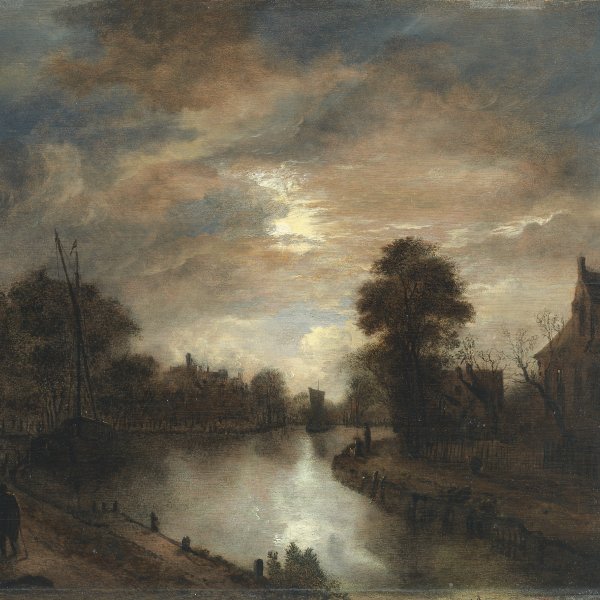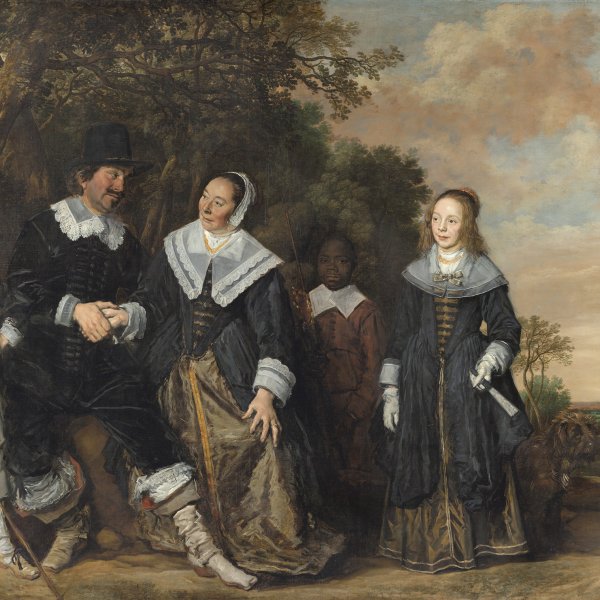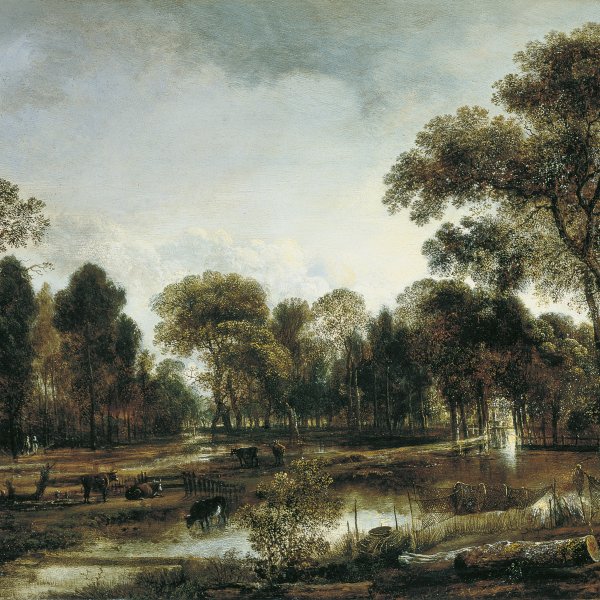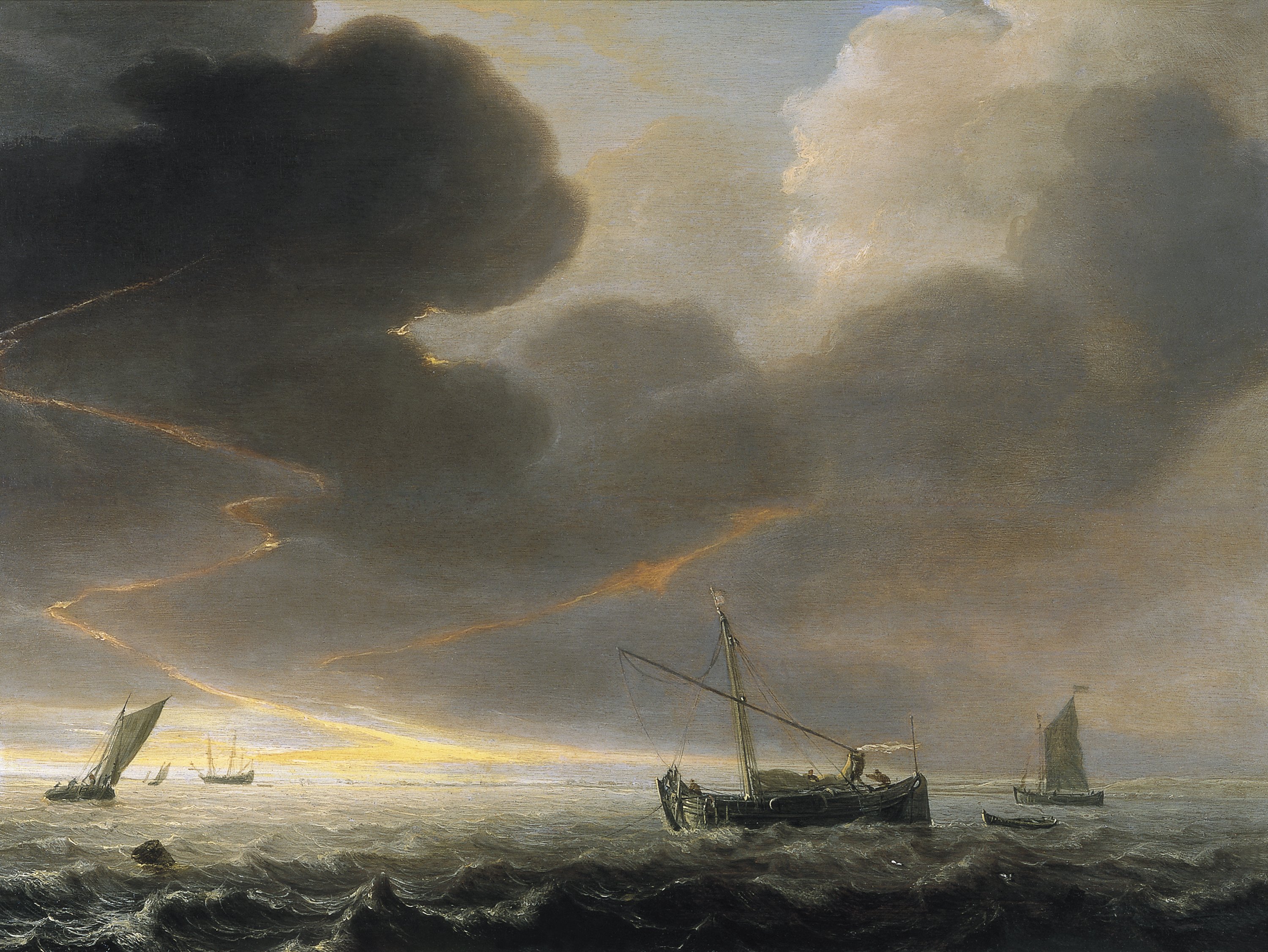Thunderstorm off the Coast
ca. 1645 - 1650
Oil on panel.
41.6 x 55.2 cm
Carmen Thyssen Collection
Inv. no. (
CTB.1979.31
)
Room A
Level 0
Carmen Thyssen Collection and Temporary exhibition rooms
In this broadly panoramic scene of choppy coastal waters an approaching lightning storm threatens several vessels. In the foreground the crew of a boat lying at anchor hastily lower their sail. Farther back are two vessels with their sheets up and a man-o-war in the distance. More than three quarters of the scene is given over to the colourful meteorological drama of the storm.
De Vlieger's marines descend from those of Jan Porcellis, who was the first to depict the Dutch inland seas and coastal waters truly naturalistically, employing aerial perspective and a subtly restrained palette. In the 1630s and 1640s De Vlieger advanced the subtlety of his atmospherics with a somewhat broader range of hues -tawny browns, greens, even pale pinks, supplementing the shades of grey favoured by Porcellis- and a surer command of spatial recession through subtle adjustments of scale and value. De Vlieger's drawings also attest to his keen interest in orthogonal perspective. Van Goyen achieved similar advances in marine painting simultaneously but never had the variety of Vlieger's palette.
Jan Kelch has dated the present work in the later half of the 1640s, Gaskell correctly noted that De Vlieger painted a thunderstorm at sea as early as 1629. Flemish 16th-century artists had painted lightning and it was also regularly depicted by Jan van Goyen and Aelbert Cuyp. As Gaskell astutely observed Dutch landscapists' interest in the challenge of rendering lighting may have been inspired by Pliny the Elder's statement that the most celebrated artist of antiquity, Apelles, "painted the unpaintable: thunder, lightning and thunderbolts [...]." Pliny was probably referring to painted allegorical personifications of lightning, but Karel van Mander's allusions to these achievements appear in the eighth chapter of his Het Schilder-boeck, which was devoted to landscape. Van Mander marvels specifically at Apelles' ability to depict lightning with only four colours, implicitly urging his fellow Dutch painters to take up this challenge: "Sometimes I wonder when I think how Apelles' paints could render thunder and lightning with so few colours. Why do we, who have so many, more refined, and more appropriate means of showing such unusual things, lack the urge to imitate nature? So let roaring waves, stirred up by Aeolus' (the God of Wind) messengers, appear as black, thundery skies, monstrously ugly. And have jagged streaks of lightning, sent by the highest of the Gods, shoot across the darkened stormy sky, so that mortal creatures may appear frightened."
Peter C. Sutton
De Vlieger's marines descend from those of Jan Porcellis, who was the first to depict the Dutch inland seas and coastal waters truly naturalistically, employing aerial perspective and a subtly restrained palette. In the 1630s and 1640s De Vlieger advanced the subtlety of his atmospherics with a somewhat broader range of hues -tawny browns, greens, even pale pinks, supplementing the shades of grey favoured by Porcellis- and a surer command of spatial recession through subtle adjustments of scale and value. De Vlieger's drawings also attest to his keen interest in orthogonal perspective. Van Goyen achieved similar advances in marine painting simultaneously but never had the variety of Vlieger's palette.
Jan Kelch has dated the present work in the later half of the 1640s, Gaskell correctly noted that De Vlieger painted a thunderstorm at sea as early as 1629. Flemish 16th-century artists had painted lightning and it was also regularly depicted by Jan van Goyen and Aelbert Cuyp. As Gaskell astutely observed Dutch landscapists' interest in the challenge of rendering lighting may have been inspired by Pliny the Elder's statement that the most celebrated artist of antiquity, Apelles, "painted the unpaintable: thunder, lightning and thunderbolts [...]." Pliny was probably referring to painted allegorical personifications of lightning, but Karel van Mander's allusions to these achievements appear in the eighth chapter of his Het Schilder-boeck, which was devoted to landscape. Van Mander marvels specifically at Apelles' ability to depict lightning with only four colours, implicitly urging his fellow Dutch painters to take up this challenge: "Sometimes I wonder when I think how Apelles' paints could render thunder and lightning with so few colours. Why do we, who have so many, more refined, and more appropriate means of showing such unusual things, lack the urge to imitate nature? So let roaring waves, stirred up by Aeolus' (the God of Wind) messengers, appear as black, thundery skies, monstrously ugly. And have jagged streaks of lightning, sent by the highest of the Gods, shoot across the darkened stormy sky, so that mortal creatures may appear frightened."
Peter C. Sutton
Emotions through art
This artwork is part of a study we conducted to analyze people's emotional responses when observing 125 pieces from the museum.
Joy: 20.87%
Disgust: 9.81%
Contempt: 4.64%
Anger: 23.71%
Fear: 13.43%
Surprise: 12.65%
Sadness: 14.89%






